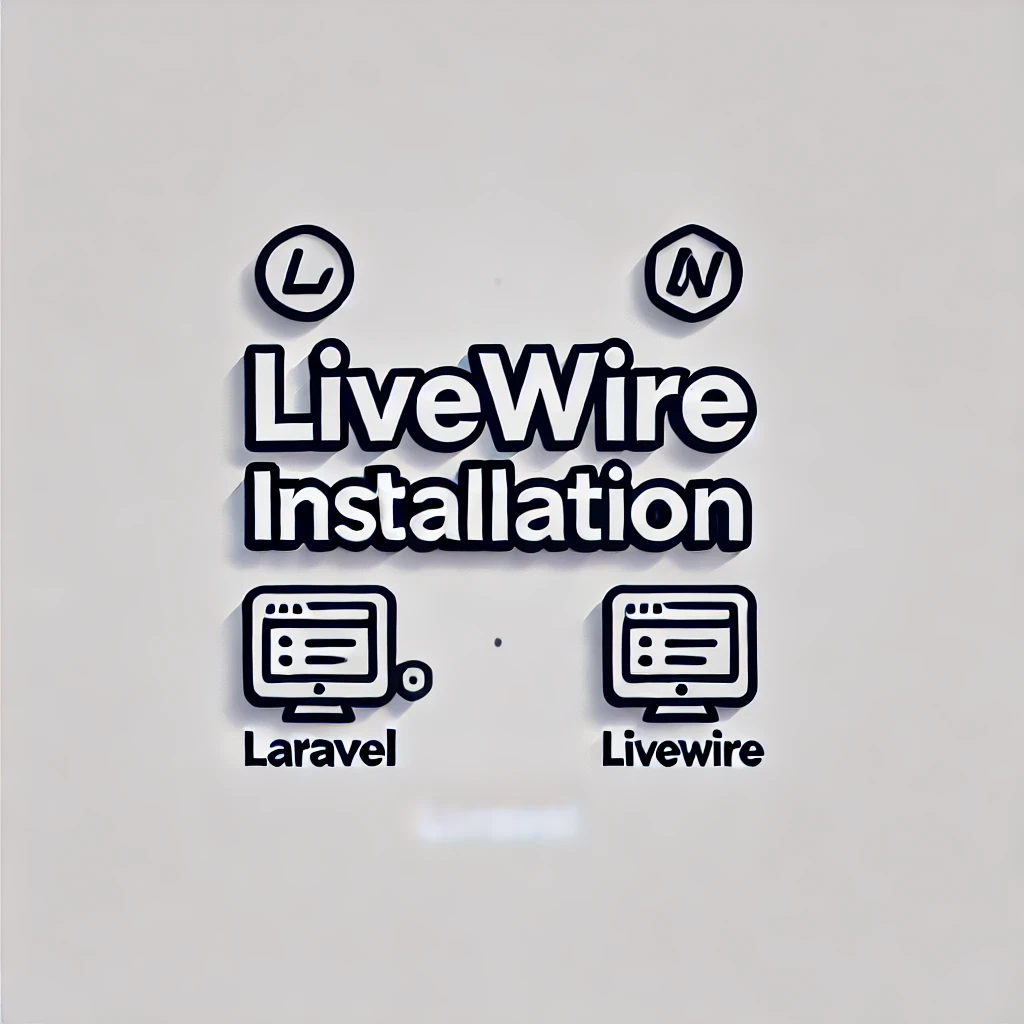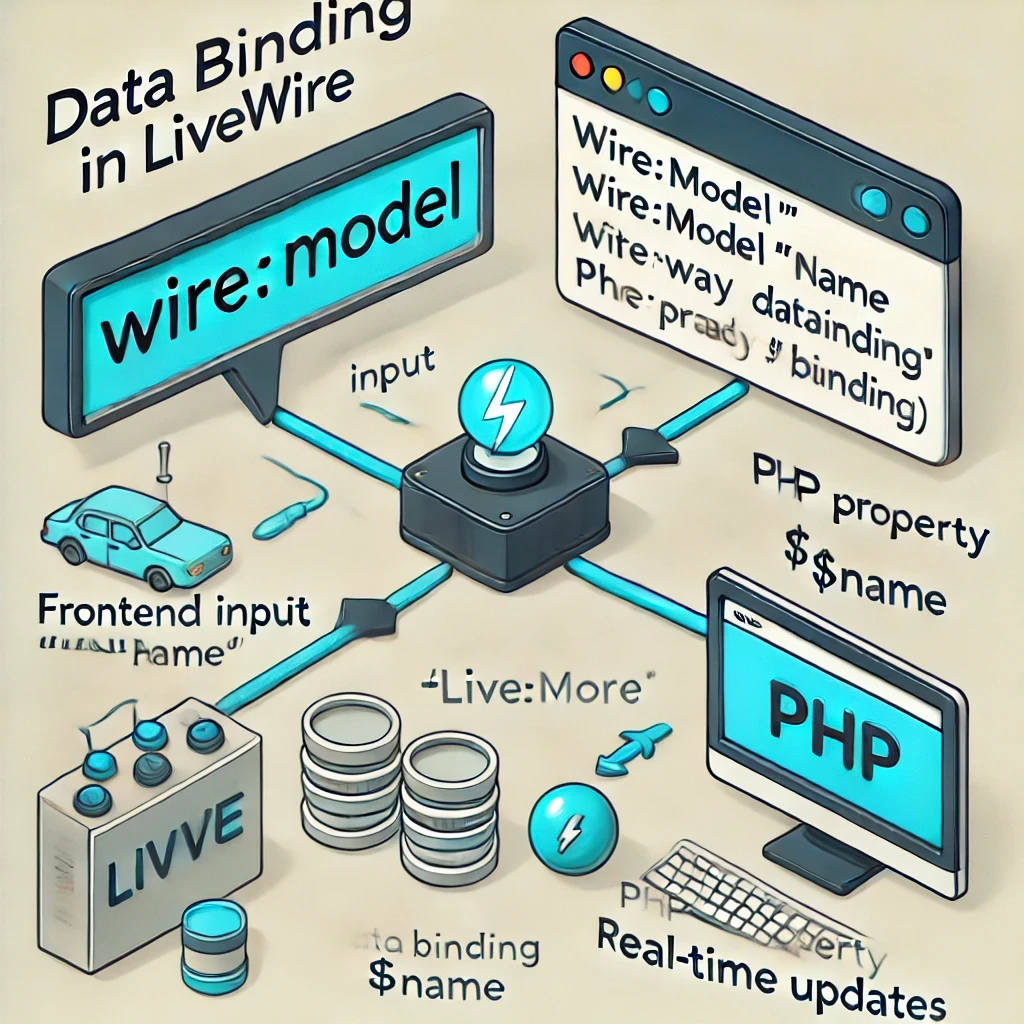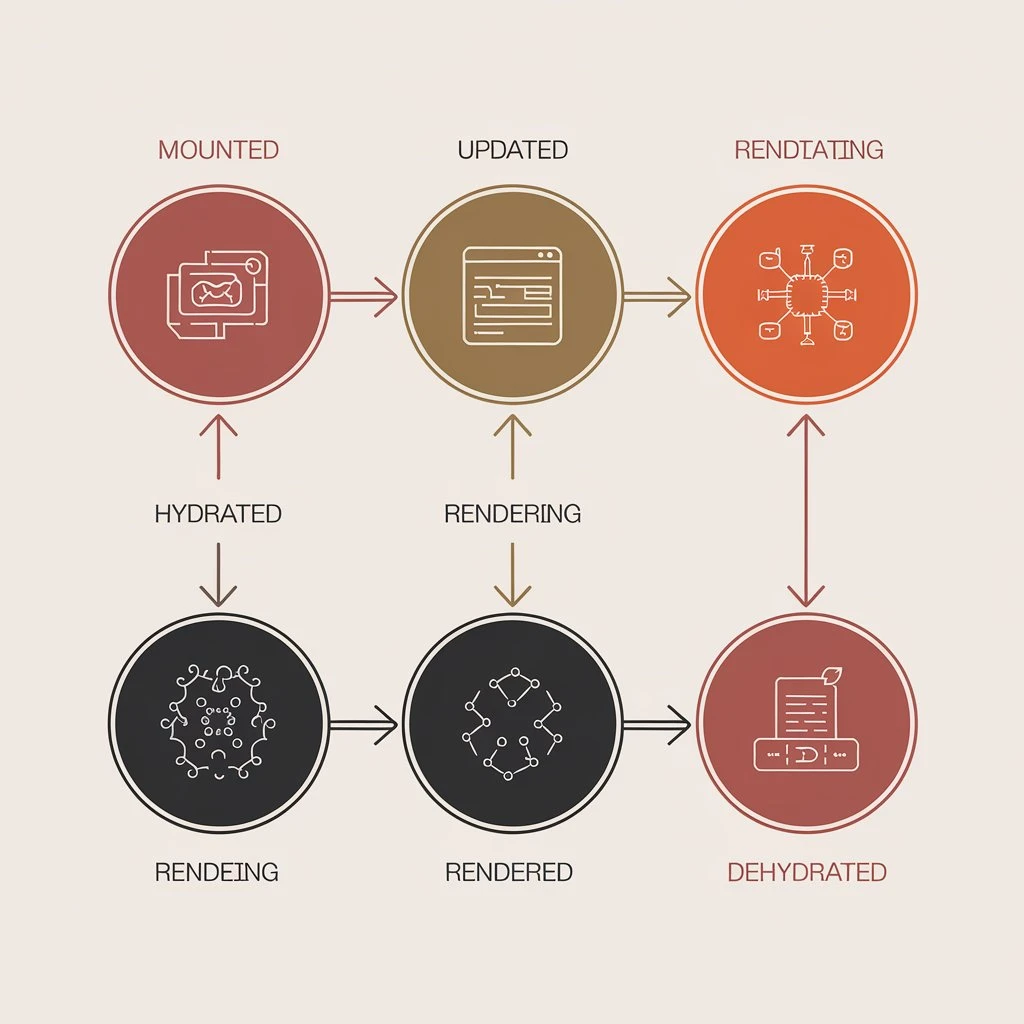- What is Component-Based Architecture ?

- 6 months ago
- 7 min read
Component-based architecture is a fundamental concept in modern web development, providing developers with a way to break down an application into small, reusable, and independent building blocks. Livewire, a full-stack framework for Laravel, embraces this approach by allowing developers to create dynamic web interfaces while maintaining a clean separation of concerns between logic and presentation. In this blog, we will explore the concept of component-based architecture in Livewire, its benefits, and how you can leverage it to build robust, scalable applications.
What is Component-Based Architecture?
Component-based architecture is an approach where a web application is divided into smaller, reusable parts called components. Each component manages its own functionality and state. In Livewire, a component is essentially a PHP class that handles business logic and a Blade view that represents the HTML.
Key Aspects of Component-Based Structure:
- Reusability: Each component can be reused in multiple parts of the application, reducing code duplication.
- Separation of Concerns: Components encapsulate their logic and presentation, making the codebase easier to maintain and understand.
- Modularity: Components are self-contained, which makes debugging and testing easier.
- Scalability: The application can be easily scaled by adding or modifying components without affecting other parts of the application.
How Livewire Implements Component-Based Structure
In Livewire, every component consists of two parts:
- The PHP Class: This handles the logic of the component.
- The Blade Template: This handles the view (HTML) of the component.
Example: A Simple Counter Component
Let's take a simple example: creating a counter component where users can increment and decrement a number.
Step 1: Create the Livewire Component
You can create a new Livewire component using the Artisan command:
php artisan make:livewire Counter
This command will generate two files:
- app/Http/Livewire/Counter.php – The PHP class for handling logic.
- resources/views/livewire/counter.blade.php – The Blade view for rendering the component.
Step 2: Define the PHP Class
Here’s how the Counter.php file might look:
<?php namespace App\Http\Livewire; use Livewire\Component; class Counter extends Component { public $count = 0; public function increment() { $this->count++; } public function decrement() { $this->count--; } public function render() { return view('livewire.counter'); } }
This class defines a $count property, and two methods: increment and decrement. These methods modify the state of the component.
Step 3: Create the Blade View
Now, let's define the HTML structure in counter.blade.php:
<div style="text-align: center;"> <h1>{{ $count }}</h1> <button wire:click="increment">+</button> <button wire:click="decrement">-</button> </div>
This Blade file includes two buttons to increment and decrement the counter and a heading that displays the current count. The wire:click directive tells Livewire to call the corresponding method in the PHP class when the button is clicked.
Step 4: Using the Component in a View
To use this component in your application, you simply include it in any Blade view:
<livewire:counter />
That’s it! You now have a working counter component with minimal JavaScript, and Livewire will handle the communication between the front-end and back-end, updating the view in real-time.
Why Use Component-Based Architecture in Livewire?
The component-based structure of Livewire offers several advantages, especially when building dynamic web applications. Below are some key reasons why this structure is so powerful:
1. Encapsulation of Logic and Presentation
In traditional web development, managing the flow of data between the front-end and back-end can become cumbersome. Livewire components encapsulate both the logic (PHP) and presentation (HTML), making it easier to manage the flow of data and UI updates within a single unit.
For example, if you are creating a user profile component, you can encapsulate everything related to the profile—such as the data fetching, form handling, and UI—in one component. This makes the codebase much more organized and manageable.
2. Reusability
Once you create a component in Livewire, you can easily reuse it across your application. Let’s say you’ve created a component for handling a product list with sorting and filtering options. You can reuse this component on different pages or even in other projects without duplicating the logic. This reduces code duplication and helps maintain consistency throughout the application.
For instance, the same Counter component we created earlier could be used multiple times on different pages:
<livewire:counter /> <livewire:counter />
Each instance of the component will function independently, handling its own state.
3. Modular and Maintainable Code
The component-based structure encourages you to break your application into smaller, self-contained modules. This not only makes your code easier to understand but also allows for easier debugging and testing. If a bug appears in one component, it’s isolated, and fixing it won’t affect other parts of your application.
This modularity also makes it easier for teams to collaborate on a project, as different team members can work on different components independently without stepping on each other's toes.
4. Livewire's Lifecycle Hooks
Livewire components have lifecycle hooks, similar to those found in JavaScript frameworks like React and Vue. These hooks allow you to run code at specific points in a component's lifecycle, such as when the component is mounted, updated, or removed from the DOM.
For example:
public function mount() { // Code to run when the component is first initialized } public function updating($name, $value) { // Code to run before updating a property }
Lifecycle hooks provide fine-grained control over the component's behavior, making it easier to handle specific scenarios like data fetching, validations, and state management.
5. Simplifies Communication Between Components
In complex applications, components often need to communicate with each other. Livewire simplifies this process by allowing components to emit events that other components can listen to. This event-driven architecture makes it easy to manage complex interactions between different parts of your application.
Example:
A ProductList component can emit an event when a product is added to the cart, and a Cart component can listen for that event and update its content accordingly:
// Emitting an event $this->emit('productAddedToCart', $productId); // Listening for an event protected $listeners = ['productAddedToCart' => 'refreshCart'];
6. Seamless Laravel Integration
Since Livewire is built for Laravel, it integrates seamlessly with other Laravel features such as routing, validation, middleware, and Eloquent models. This means that you don’t have to learn new paradigms or workflows—everything you’re used to in Laravel can be applied within your Livewire components.
For example, you can easily validate form data using Laravel’s validation system:
$this->validate([ 'email' => 'required|email', 'password' => 'required|min:6', ]);
This tight integration allows you to leverage Laravel’s full power in your Livewire components, making development more efficient and enjoyable.
Conclusion
The component-based structure in Livewire offers a powerful and flexible way to build dynamic, interactive web applications without needing to rely on JavaScript frameworks. By encapsulating both logic and presentation in reusable components, Livewire simplifies the development process, enhances reusability, and improves maintainability. Whether you're building small, self-contained UI elements or large, complex web applications, Livewire's component-based architecture provides the tools and patterns you need to succeed.
By leveraging this architecture, you can build scalable, efficient, and easily maintainable applications while staying within the familiar Laravel ecosystem.

Step-by-step tutorial to install Livewire

Livewire Key Features That Make It Stand Out

What is Component-Based Architecture ?

Real-Time Front-End Updates in Livewire

Zero JavaScript in Livewire Revolutionizing Laravel Development

Data Binding in Livewire A Seamless Way to Sync Data

File Uploads Made Easy in Livewire

Understanding Loading States in Livewire

Understanding Lifecycle Hooks in Laravel Livewire

Optimizing Livewire Performance for Faster Web Applications

